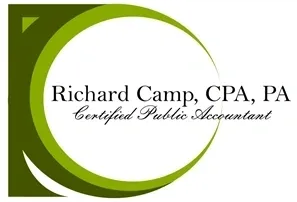Changes in tax Law
IRS Changes Position on Claiming Childless EIC; Amended Returns May be in Order
The IRS issued proposed regulations which reflect a change in the IRS’s position on the interaction of the Code Sec. 152(c)(4) tiebreaker rules, which goes into effect when two or more people can claim a child as a qualifying child for tax purposes, with the Code Sec. 32 earned income credit rules. Under the revised position, if an individual is not treated as a qualifying child of a taxpayer after applying the tiebreaker rules in Code Sec. 152(c)(4), then the individual will not prevent that taxpayer from qualifying for the childless earned income credit. REG-137604-07 (1/19/17).
Background
Under Code Sec. 32, a taxpayer may claim an earned income credit (EIC) if the taxpayer:
(1) has earned income,
(2) has adjusted gross income not in excess of certain limits,
(3) does not have more than a specified amount of investment income,
(4) is a U.S. citizen or resident for the entire year,
(5) does not file as married filing separately,
(6) has a valid social security number, and
(7) does not claim the foreign earned income exclusion or the foreign housing exclusion or deduction.
The credit is available to taxpayers with a qualifying child or qualifying children, as well as taxpayers without a qualifying child, although different sets of rules apply.
Sometimes an individual meets the tests to be a qualifying child of more than one person. However, only one of these persons can treat the child as a qualifying child for EIC and other child-related tax benefit purposes (such as the child tax credit and the credit for child and dependent care expenses). The other person(s) cannot claim any of these benefits based on the qualifying child. A tiebreaker rules in Code Sec. 152(c)(4) determine who, if anyone, can claim the EIC when an individual is a qualifying child of more than one person.
A taxpayer who does not have a qualifying child for the tax year, but who meets the general requirements to claim the EIC, can claim the “childless EIC” under Code Sec. 32(c)(1)(A) and (B) if the taxpayer (1) is age 25 through 64, or files jointly with someone who meets this age test; (2) lives in the U.S. for more than half the tax year; (3) cannot be claimed as a dependent on another taxpayer’s return for the year; and (4) is not a qualifying child of another taxpayer for the year.
Richard Camp, CPA, PA blogs and all other multimedia content is provided for informational and educational purposes only and should not be construed as financial tax, accounting, legal, consulting or any other type of advice regarding any specific facts and circumstances, nor should they be construed as advertisements for financial services. Because accounting standards, tax law, and technologies are constantly changing, content in this blog could contain outdated information.
IRS CIRCULAR 230 NOTICE: To ensure compliance with requirements imposed by the IRS, we inform you that any U.S. tax advice contained in this website (or in any attachment) is not intended or written to be used, and cannot be used, for the purpose of (i) avoiding penalties under the Internal Revenue Code or (ii) promoting, marketing or recommending to another party any transaction or matter addressed in this website (or in any attachment).
Richard Camp, CPA, PA blogs and all other multimedia content is provided for informational and educational purposes only and should not be construed as financial tax, accounting, legal, consulting or any other type of advice regarding any specific facts and circumstances, nor should they be construed as advertisements for financial services. Because accounting standards, tax law, and technologies are constantly changing, content in this blog could contain outdated information.
IRS CIRCULAR 230 NOTICE: To ensure compliance with requirements imposed by the IRS, we inform you that any U.S. tax advice contained in this website (or in any attachment) is not intended or written to be used, and cannot be used, for the purpose of (i) avoiding penalties under the Internal Revenue Code or (ii) promoting, marketing or recommending to another party any transaction or matter addressed in this website (or in any attachment).
Richard Camp, CPA, PA blogs and all other multimedia content is provided for informational and educational purposes only and should not be construed as financial tax, accounting, legal, consulting or any other type of advice regarding any specific facts and circumstances, nor should they be construed as advertisements for financial services. Because accounting standards, tax law, and technologies are constantly changing, content in this blog could contain outdated information.
IRS CIRCULAR 230 NOTICE: To ensure compliance with requirements imposed by the IRS, we inform you that any U.S. tax advice contained in this website (or in any attachment) is not intended or written to be used, and cannot be used, for the purpose of (i) avoiding penalties under the Internal Revenue Code or (ii) promoting, marketing or recommending to another party any transaction or matter addressed in this website (or in any attachment).
